
Gian LorenzoBernini was an Italian sculptor and architect. While a major figure in the world of architecture, he was more prominently the leading sculptor of his age, credited with creating the Baroque style of sculpture. As one scholar has commented, "What Shakespeare is to drama, Bernini may be to sculpture: the first pan-European sculptor whose name is instantaneously identifiable with a particular manner and vision, and whose influence was inordinately powerful ..." In addition, he was a painter and a man of the theatre: he wrote, directed and acted in plays, for which he designed stage sets and theatrical machinery. He produced designs as well for a wide variety of decorative art objects including lamps, tables, mirrors, and even coaches.

Pope Clement X, born Emilio Bonaventura Altieri, was head of the Catholic Church and ruler of the Papal States from 29 April 1670 to his death, in July 1676. Elected pope at age 79, he has since been ranked as the oldest pope at the time of his election.

Santa Maria della Vittoria is a Catholic titular church and basilica dedicated to the Virgin Mary in Rome, Italy. The church is known for the masterpiece by Gian Lorenzo Bernini in the Cornaro Chapel, the Ecstasy of Saint Teresa. The church is in the Rione Sallustiano, on number 98 via XX Settembre, where this street intersects with Largo Santa Susanna. It stands to the side of the Fontana dell'Acqua Felice. The church mirrors the Church of Santa Susanna across the Largo. It is about two blocks northwest of the Piazza della Repubblica and Teatro dell'Opera metro station.
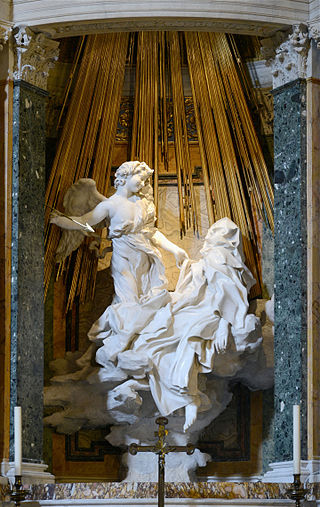
The Ecstasy of Saint Teresa is a sculptural altarpiece group in white marble set in an elevated aedicule in the Cornaro Chapel of the church of Santa Maria della Vittoria in Rome. It was designed and carved by Gian Lorenzo Bernini, the leading sculptor of his day, who also designed the setting of the chapel in marble, stucco and paint. The commission was completed in 1652.

Giovanni Battista Gaulli, also known as Baciccio or Baciccia, was an Italian artist working in the High Baroque and early Rococo periods. He is best known for his grand illusionistic vault frescos in the Church of the Gesù in Rome, Italy. His work was influenced by Gian Lorenzo Bernini.
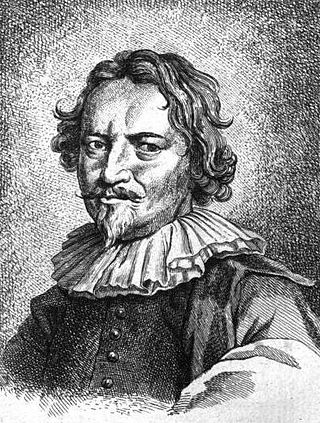
Carlo Fontana (1634/1638–1714) was an Italian architect originating from today's Canton Ticino, who was in part responsible for the classicizing direction taken by Late Baroque Roman architecture.

San Francesco a Ripa is a church in Rome, Italy. It is dedicated to Francis of Assisi who once stayed at the adjacent convent. The term Ripa refers to the nearby riverbank of the Tiber.

Santa Cecilia in Trastevere is a 5th-century church in Rome, Italy, in the Trastevere rione, devoted to the Roman martyr Saint Cecilia.

Melchiorre Cafà (1636–1667), born Melchiorre Gafà and also known as Caffà, Gafa, Gaffar or Gafar, was a Maltese Baroque sculptor. Cafà began a promising career in Rome but this was cut short by his premature death following a work accident. He was the older brother of the architect Lorenzo Gafà.

Blessed Ludovica Albertoni is a funerary monument by the Italian Baroque artist Gian Lorenzo Bernini. The Trastevere sculpture is located in the specially designed Altieri Chapel in the Church of San Francesco a Ripa in Rome, Italy. Bernini started the project in 1671, but his work on two other major works—The Tomb of Pope Alexander VII and the Altar of the Blessed Sacrament in St. Peter's Basilica—delayed his work on the funerary monument. Bernini completed the sculpture in 1674; it was installed by 31 August 1674.

Santa Maria in Campitelli or Santa Maria in Portico is a church dedicated to the Virgin Mary on the narrow Piazza di Campitelli in Rione Sant'Angelo, Rome, Italy. The church is served by the Clerics Regular of the Mother of God.
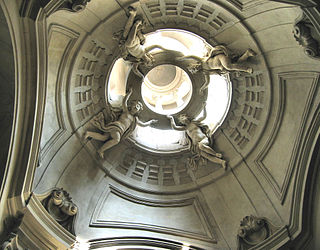
Antonio Gherardi was an Italian painter, architect, and sculptor (stuccoist) of the Baroque style, active mainly in and near Rome and his native city of Rieti.

Mattia de Rossi was an Italian architect of the Baroque period, active mainly in Rome and surrounding towns.

Cosimo Fancelli was an Italian sculptor of the Baroque period, active mainly in Rome. He worked on a number of commissions with Pietro da Cortona from 1647 until Cortona's death in 1669. Gian Lorenzo Bernini considered him one of the best sculptors in Rome.
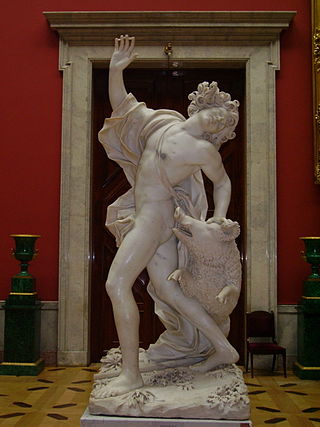
Giuseppe Mazzuoli was an Italian sculptor working in Rome in the Bernini-derived Baroque style. He produced many highly accomplished sculptures of up to monumental scale but was never a leading figure in the Roman art world.

Italian Baroque art is a term that is used here to refer to Italian painting and sculpture in the Baroque manner executed over a period that extended from the late sixteenth to the mid eighteenth centuries. Italian Baroque architecture is not covered.

Paluzzo Paluzzi Altieri degli Albertoni was an Italian Catholic Cardinal and Cardinal-Nephew to Pope Clement X.

The Statue of Pope Clement X is one of the final sculptural works executed by the Italian artist Gian Lorenzo Bernini. It depicts Pope Clement X in the act of benediction, and is housed in the Galleria Nazionale d'Arte Antica in the Palazzo Barberini, Rome.
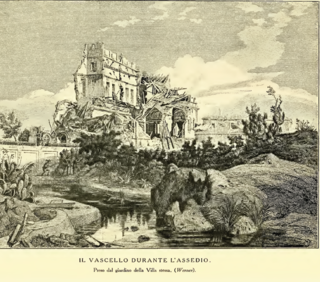
Plautilla Bricci was a 17th-century Roman architect, painter and sculptor; she was the only female architect of her day. Her most famous work is Villa Benedetti near the Porta San Pancrazio, Rome. She also designed the third chapel on the left aisle in the Church of San Luigi dei Francesi, Rome, dedicated to St. Louis, having also painted the altarpiece in this chapel.
Albertoni is a surname. Notable people with this surname include:






















